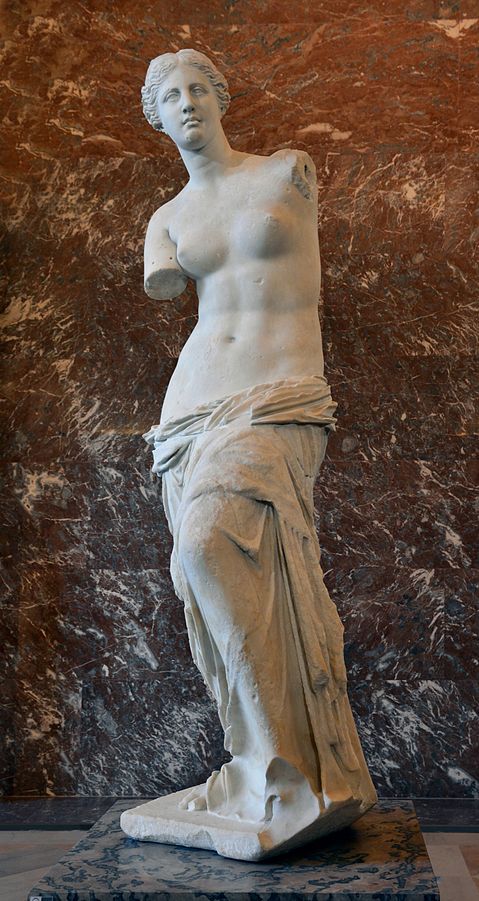
Venus De Milo
This graceful statue of a goddess has intrigued and fascinated since its discovery on the island of Melos in 1820. Is it Aphrodite, who was often portrayed half-naked, or the sea goddess Amphitrite, who was venerated on Melos? The statue reflects sculptural research during the late Hellenistic Period: classical in essence, with innovatory features such as the spiral composition, the positioning in space, and the fall of the drapery over the hips.
The discovery of a mutilated masterpiece
The Venus de Milo was discovered in 1820 on the island of Melos (Milos in modern Greek) in the south-western Cyclades. The Marquis de Rivière presented it to Louis XVIII, who donated it to the Louvre the following year. The statue won instant and lasting fame. Essentially two blocks of marble, it is comprised of several parts which were sculpted separately (bust, legs, left arm and foot) then fixed with vertical pegs, a technique which was fairly common in the Greek world (especially in the Cyclades, where this work was produced around 100 BC). The goddess originally wore metal jewelry — bracelet, earrings, and headband — of which only the fixation holes remain. The marble may have been embellished with (now faded) polychromy. The arms were never found.
Modern use
The statue has greatly influenced masters of modern art; one prime example is Salvador Dali’s Venus de Milo with Drawers.
The statue was formerly part of the seal of the American Society of Plastic Surgeons (ASPS), one of the oldest associations of plastic surgeons in the world.
In February 2010, the German magazine Focus featured a doctored image of this Venus giving Europe the middle finger, which resulted in a defamation lawsuit against the journalists and the publication. They were found not guilty by the Greek court.
References
- En.wikipedia.org. (2017). Venus de Milo. [online] Available at: https://en.wikipedia.org/wiki/Venus_de_Milo [Accessed 28 Sep. 2017].
- Louvre.fr. (2017). Aphrodite, known as the “Venus de Milo” | Louvre Museum | Paris. [online] Available at: http://www.louvre.fr/en/oeuvre-notices/aphrodite-known-venus-de-milo [Accessed 28 Sep. 2017].
- Penelope.uchicago.edu. (2017). Venus de Milo. [online] Available at: http://penelope.uchicago.edu/~grout/encyclopaedia_romana/miscellanea/venus/venusdemilo.html [Accessed 28 Sep. 2017].




